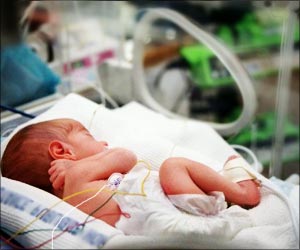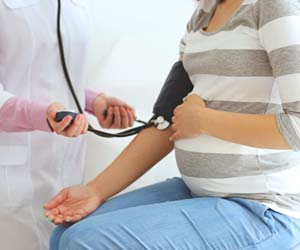A study by American scientists has added a new weapon of defense against elective caesarean operations.
A study by American scientists has added a new weapon of defense against elective caesarean operations.
The study lead by Dr Qiuying Yang, from the University of Ottawa and published in an international journal of obstetrics and gynecology -BJOG, has linked C-sections to a very strong risk of future pregnancy complications, arising from problems concerned with the placenta.Based on a million pregnancies recorded by the US National Center for Health Statistics from 1995 to 2000, the researchers were able to conclude that women who have their first child by caesarean were more likely to have placenta-related problems in their second pregnancy.
The risk of a placenta attaching low down in the womb or rupturing increases by almost 50 percent, accordingly.
In mothers who had their first baby by caesarean, the risk of placental previa - a condition where the placenta attaches over or near the internal opening of the cervix - was 47 percent higher in their second pregnancy than women who gave birth naturally.
The risk of a second condition, placenta abruptio - where the placenta separates from the womb prematurely - was 40 percent higher in women who had a previous caesarean.
The researchers attribute scarring inside the womb caused by caesareans, to faulty attachment of the placenta in future pregnancies.
Advertisement
'More than 1 percent of pregnancies with a prior caesarean section had one of these events, which had a 50 percent increase compared to women without previous caesarean section.
Advertisement
Professor Andrew Shennan, consultant obstetrician at St Thomas' Hospital in London and spokesperson for baby charity Tommy's, said problems with bleeding in pregnancy were a daily occurrence for obstetricians.
'If someone has a low placenta on a scar, that's a dangerous situation and one of the most frightening in obstetrics.
'It's something that should come into a consultation about caesarean when there is an element of choice involved - we're talking about small numbers, it's something women should be aware of', he opined.
Professor Philip Steer, BJOG editor-in-chief, added: 'The caesarean section rate in the UK is one of the highest in the world.
'Women need to be informed of the possible risks that can happen throughout the pregnancy and how it is important to have their scheduled ultrasound scans to detect if the baby is developing safely.
'Should a woman encounter unusual bleeding during her pregnancy, it is best if she sees the doctor immediately', he warns.
Cesarean birth is major surgery, and, as with other surgical procedures, risks are involved. The estimated risk of a woman dying after a cesarean birth is less than one in 2,500 (the risk of death after a vaginal birth is less than one in 10,000). These are estimated risks for a large population of women. Individual medical conditions such as some heart problems may make the risk of vaginal birth higher than cesarean birth.
Other risks for the mother include the following: · Infection. The uterus or nearby pelvic organs such as the bladder or kidneys can become infected.
· Increased blood loss. Blood loss on the average is about twice as much with cesarean birth as with vaginal birth. However, blood transfusions are rarely needed during a cesarean.
· Decreased bowel function. The bowel sometimes slows down for several days after surgery, resulting in distention, bloating and discomfort.
· Respiratory complications. General anesthesia can sometimes lead to pneumonia.
· Longer hospital stay and recovery time. Three to five days in the hospital is the common length of stay, whereas it is less than one to three days for a vaginal birth.
· Reactions to anesthesia. The mother's health could be endangered by unexpected responses (such as blood pressure that drops quickly) to anesthesia or other medications during the surgery.
· Risk of additional surgeries. For example, hysterectomy, bladder repair, etc.
In cesarean birth, the possible risks to the baby include the following:
· Premature birth. If the due date was not accurately calculated, the baby could be delivered too early.
· Breathing problems. Babies born by cesarean are more likely to develop breathing problems such as transient tachypnea (abnormally fast breathing during the first few days after birth).
· Low Apgar scores. Babies born by cesarean sometimes have low Apgar scores. The low score can be an effect of the anesthesia and cesarean birth, or the baby may have been in distress to begin with. Or perhaps the baby was not stimulated as he or she would have been by vaginal birth.
· Fetal injury. Although rare, the surgeon can accidentally nick the baby while making the uterine incision.
Source-Medindia
ANN/B







